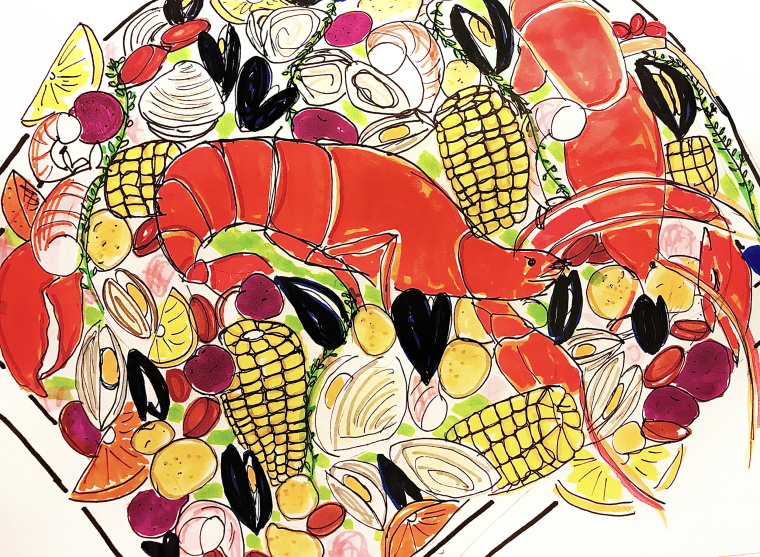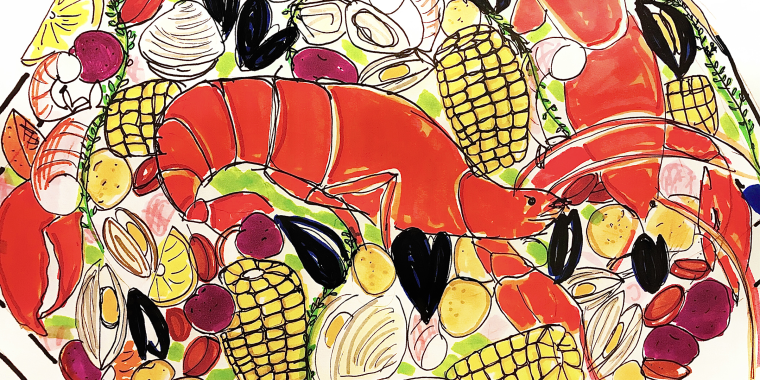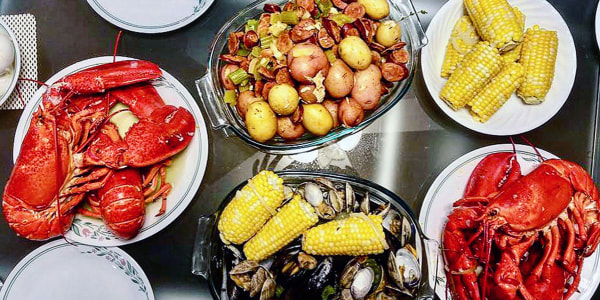Warm weather means it's clambake season.
What was once a Native American tradition of cooking clams and shellfish in sandpits over 2,000 years ago eventually became the clambake right after the American Revolution, and has since taken many forms. Over time, it evolved from being cooked over hot stones to being boiled in a giant pot.
Now, it’s a comfort food with many variations across the globe: a Cape Cod beach bonfire clambake, a Chesapeake Bay blue crab boil, low country boil (aka Frogmore stew), Normandy-style fruits de mer with crème fraîche and Calvados, Viet-Cajun seafood boil with shrimp and crawfish, or the way I like it — with kimchi added to the vegetables and sausage in the pot.
This one-pot clambake is so simple thing to make, with such a quick cooking time for so much food. It is the reason I finally invested in my own steamer pot (it even has its own name now: Matilda). My favorite part of any clambake is actually the potatoes at the bottom of the pot, soft from the steam and deeply flavorful from absorbing all the juices.
Whether strewn out over newspaper or served up in platters, this clambake will bring the beach right to your table. Bring on the sunshine!
A few tips before you start:
- Try to use a large pot that measures to about 12 quarts. For this recipe, I used a 3-piece multi-cooker steamer pot.
- When picking your fresh clams and mussels, make sure they’re closed before cooking. If they’re open, tap the top of the shell to see if it closes. If it doesn’t, discard it!
- To help clean your clams and mussels, submerge them in a bowl of cold water mixed with about 1/3 cup of flour and let them soak for about 30 minutes before draining them. This will help extract the excess sand.
Clambake ingredients
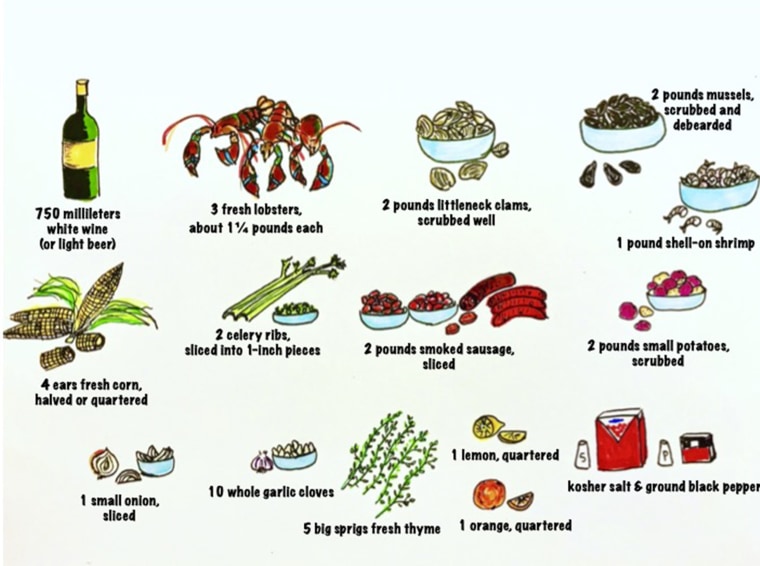
Preparation
Place your steamer pot on your burner. Add in the white wine and about 2 cups of water and bring to a rolling boil over medium-high heat.
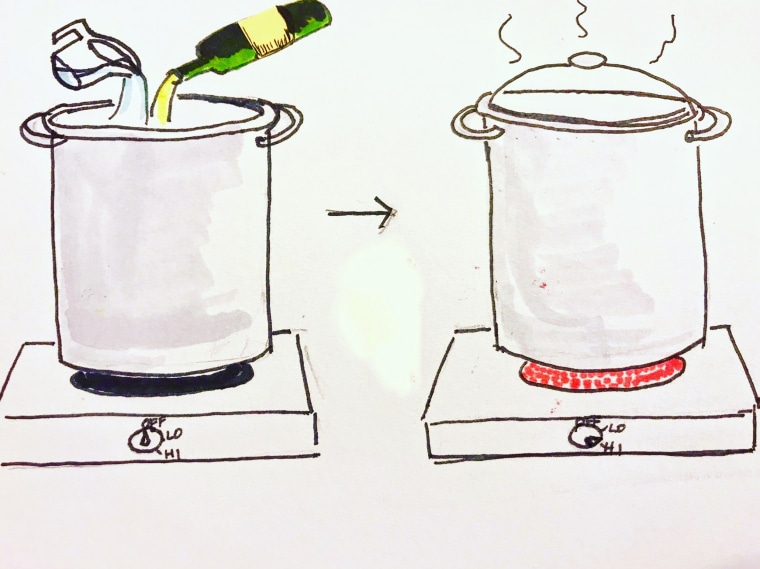
Once the liquid comes to a boil, put the large steamer basket in your steamer pot and carefully add in your small potatoes. Put the lid back on the pot again and let the potatoes cook for about 7 minutes.
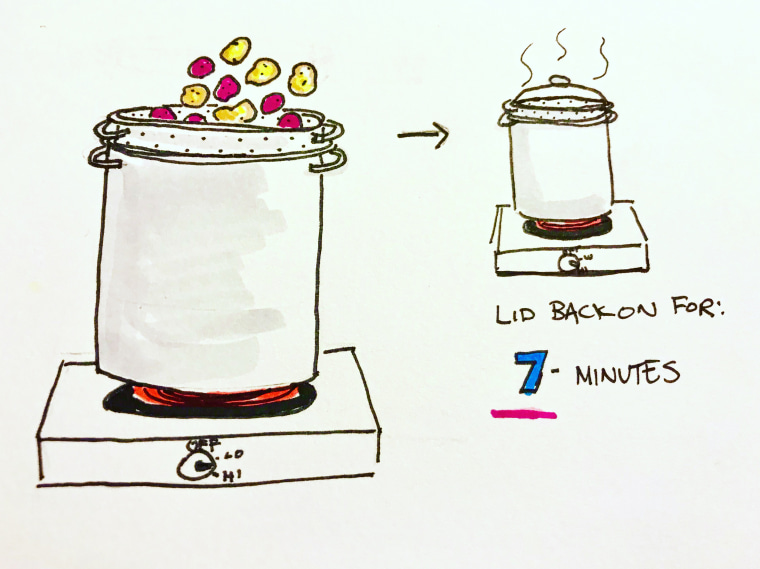
Next, in go your lobsters. Carefully arrange them on top of the potatoes. Cover the pot again and let them cook together for 10 minutes.
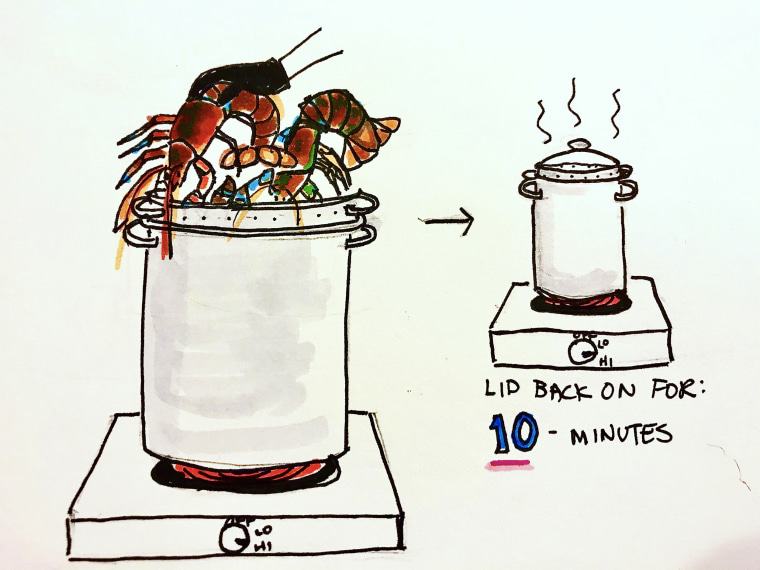
After the 10 minutes are up, strategically place the corn to fit around the lobsters. Put the lid back on the pot and cook for another 5 minutes.
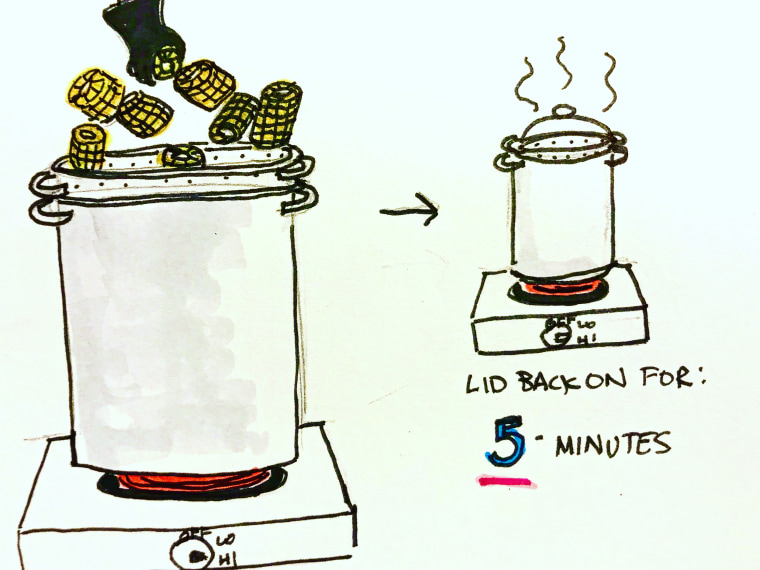
Next, add your celery, onion slices and chopped sausages. Put the lid back on and cook for another 5 minutes.
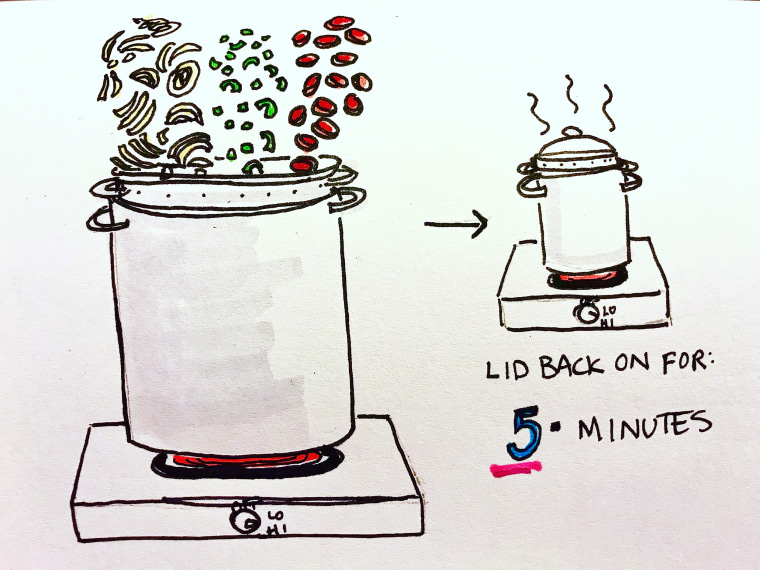
Next, add in your steamer clams, quartered lemon and orange, garlic cloves and sprigs of thyme. Arrange everything to fit as best as possible. Cover the pot again and let it all cook together for 10 more minutes.
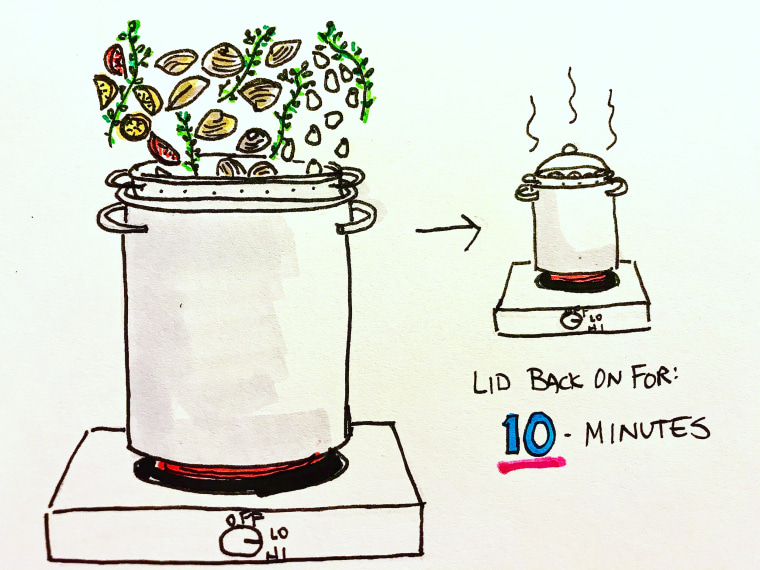
Finally, after those 10 minutes, add in your mussels and shrimp. Cover the pot one more time, and let it all cook together for about 5 minutes, or until the mussels and clams open (discard any that do not open) and the shrimp is pink and cooked. Turn off the heat.
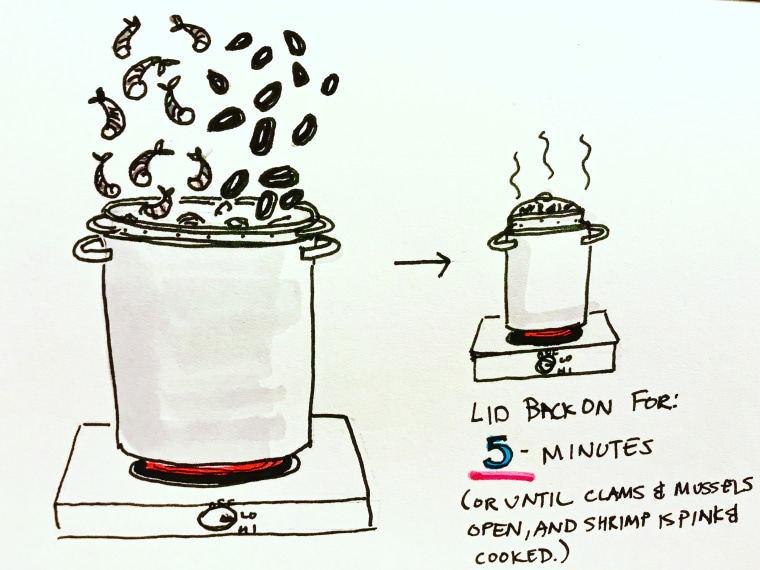
Time to serve! Use your slotted spoon, ladle and tongs to transfer everything out of the steamer and onto platters or spread out onto a paper-lined table. Season clambake with a few pinches of kosher salt and black pepper, and serve with side sauces or melted butter, as preferred. Feel free to ladle some of the steaming broth from the pot and pour over the top of your platters or into small bowls. Serve, eat and enjoy!
